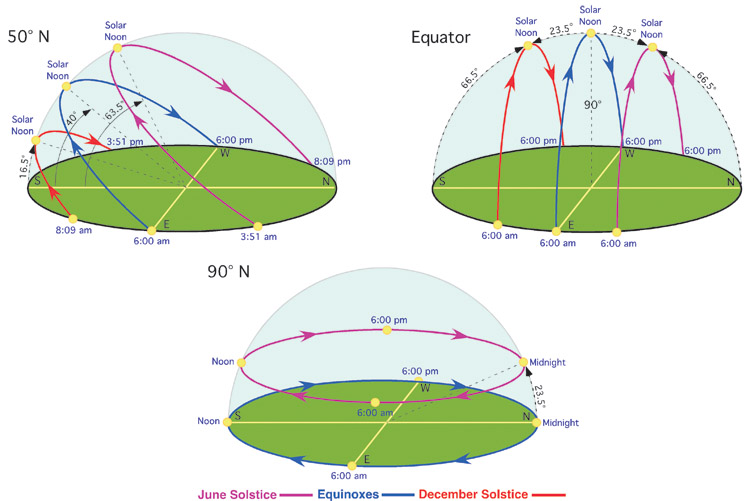
I don't want to put my solar array there. So in that picture, I can see a little bit of sky there but mostly I see reflections of trees. What it's looking at is things that are there all the time, like trees. That's the simplest Solar Pathfinder, which is nothing more than a chart with a dome over it, a reflecting dome. The picture on here is a picture of one of our Solar Pathfinders, where we are able to, on any day of the year, as long as daylight, look at what things are going to shade this spot where I'm standing with my Solar Pathfinder. Typically, we'll put them up to 300 feet is not that difficult for ground-mounts. If you can keep your ground-mounts within a 100 feet, that has very little impact on the cost. The more digging of trenches and laying of conduit you have to do, which costs real money to do that. It's 1,500 feet away?" Well, yes, but it's going to be really expensive for wiring, because the farther away you are, the bigger wire you have to use to avoid voltage drop. People often ask us, well, "Can I put my solar away way over here and this other farm field. For ground-mounts, if you really can't put it on the roof, then find a sunny spot in the yard to put it. So there's usually some things to worry about when it comes to shade. If you're going to put your solar panels on the roof, there are things that are not on the roof like other buildings, trees, and other things that might on the roof like vents or chimneys. Usually there's a variety of things to worry about. If you can't find a spot where you are three times as far away from shading things as the shading things are tall, then you can be assured there won't be any shade there. So we want to find a spot to put our panels where there's no shade. Even roof orientation, as long as it's not the north roof, roof orientation is not necessarily a big problem. The first thing I'm going to talk about is shade, because that's the biggest bugaboo for solar.

To learn more about the specialization, check out a video overview at.
#SOLAR SUN PATH FINDER CODE#
This is the second course in the Solar PV for Engineers, Architects and Code Inspectors specialization. Material includes online lectures, videos, demos, hands-on exercises, project work, readings and discussions. Those who are unfamiliar with how PV works, the elements of a PV system, and/or solar power ROI should take the first course of the specialization, Solar Energy Systems Overview.

Learners should have a basic grasp of electrical engineering, physics and mathematical concepts. It is also appropriate for HVAC installers, architects and building code inspectors. This course is targeted for engineers who have interest in entering the solar power sectors. Learners experiment with calculations needed to design a PV system, exercising newly gained knowledge about site selection, layout, code compliance, system components, and wire sizing. The course probes key design concerns – including load, efficiency, and mechanical and electrical design – as well as aesthetics and tools for planning. It directs learners through the important steps of initial site inspection and evaluating appropriate locations for PV systems, and features unique elements of residential, small, industrial and utility-scale solar applications.


This course supplies learners with the insights necessary for properly planning, and therefore successfully installing, a photovoltaic (PV) system per design specifications.


 0 kommentar(er)
0 kommentar(er)
